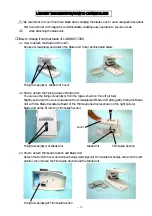
Chapter 3
Developing Your Application
3-6
ni.com
Older programs that use the NI-VXI API now use the NI-VXI-to-NI-VISA
compatibility layer to communicate with the VXI devices. Using this layer,
older programs can run in NI-VXI 3.0 or later without being rewritten to
use the VISA interface.
Note
The NI-VXI API development environment is not installed by default as part of the
NI-VXI installation. If you must develop an application using the older NI-VXI API, run
the NI-VXI installer and perform a Complete install or select the appropriate option in the
custom installation screen. Be sure to review the
section.
NI-VISA is the National Instruments implementation of the VISA API as
the VXI
plug&play
standard defines. It provides a common interface to
many types of instruments (such as VXI, GPIB, PXI, Serial, TCP/IP, and
so on) and therefore is especially useful in situations where you are using
multiple types of instruments.
Both NI-VISA and the NI-VXI API include functions for register-level
access to VXI instruments and messaging capability to message-based
devices. You can also use either interface to service asynchronous events
such as triggers, signals, and interrupts, and also assert them. Compatibility
with the NI-VXI API is included for legacy applications only—
NI recommends that you write all new VXI/VME applications in VISA.
The best way to learn NI-VISA programming is by reviewing the example
programs your software includes. The examples directory contains working
VISA programs that illustrate many different types of applications. You can
find these examples in the
VXIpnp\WinNT\NIvisa\Examples
directory.
If you are just getting started, you should learn how to access registers with
high-level calls and send messages with word-serial functions. The
NI-VISA examples for these tasks are
HighReg.c
and
RdWrt.c
. Refer to
the other examples as you try more advanced techniques. Consult the
NI-VISA online help for additional information about these topics.
Table 3-1 summarizes the topics the example programs address. All files
are in the
VXIpnp\WinNT\NIvisa\Examples
directory, in the
subdirectories listed below.
















































